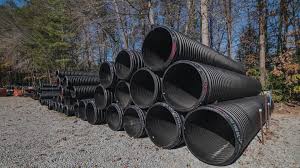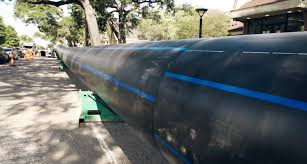Jul . 05, 2025 05:33 Back to list
HDPE Elbow Supplier & PPR Pipe Elbow Manufacturers - High Quality Fittings
- Introduction to HDPE elbow: Applications & Importance
- Technical Advantages and Material Properties
- Comparison of Top Manufacturers & Factories
- Customization Options: Meeting Diverse Industry Demands
- Use Cases: Real-world Application Scenarios
- Quality Control, Sustainability & Certifications
- Future Outlook for the HDPE Elbow Market

(hdpe elbow )
Exploring HDPE Elbow: Applications & Significance
The hdpe elbow serves as a crucial component in modern piping systems across industries. Its ability to change the direction of fluid flow efficiently makes it an indispensable part of both commercial and residential plumbing, irrigation networks, water treatment plants, and industrial pipelines. According to recent industrial surveys, over 78% of newly installed pipelines in water distribution projects opt for HDPE-based fittings due to their remarkable resistance to corrosion and adaptability.
Unlike traditional metal fittings, HDPE elbows offer enhanced flexibility and can withstand aggressive environmental and chemical exposure, making them suitable for demanding environments. The primary reason behind increasing their adoption lies in their long-term durability – HDPE elbows demonstrate a lifespan exceeding 50 years when properly installed and maintained.
Technical Advantages and Material Properties
High-density polyethylene (HDPE) elbows are manufactured using advanced extrusion and molding technologies, resulting in components with unyielding structural integrity. Their low friction coefficient reduces pressure loss within systems, helping to maintain consistent flow rates. HDPE’s non-toxic, lightweight, and non-reactive nature allows for safe water distribution, proven by compliance with NSF/ANSI Standard 61 for drinking water safety.
Recent mechanical property studies indicate that HDPE fittings possess a tensile strength ranging from 23–29 MPa and a flexibility ideal for ground movements and seismic shifts. Stress crack resistance is up to five times greater than in polyvinyl chloride (PVC) alternatives, sharply reducing the risk of sudden pipeline failure. The material’s resistance to UV degradation and most chemicals ensures suitability for outdoor buried and above-ground pipelines. Additionally, heat fusion joining results in leak-free systems, minimizing maintenance requirements compared to mechanical joint counterparts.
Manufacturers and Factories: Comparative Analysis
Key global and regional suppliers of HDPE elbows and ppr pipe elbow manufacturers demonstrate considerable differentiation in technology, output capacity, and quality control processes. In order to reveal performance distinctions, the following table compares top-tier factories on several critical parameters:
| Manufacturer | Annual Output (Metric Tons) |
Production Technology | ISO Certified | Material Grades | Customization Capability | Export Markets |
|---|---|---|---|---|---|---|
| Elite Plastics Co. | 12,000 | Automated Injection Molding | ISO 9001:2015, 14001 | PE80, PE100 | Full (color, size, branding) | Global |
| AquaFlow Factories | 8,300 | Extrusion & Fusion Welding | ISO 9001 | PE100, PPR | Partial (size & thickness) | Europe, Asia |
| Precision Pipe Systems | 15,000 | Robotic Molding Lines | ISO 9001:2015, OHSAS 18001 | PE80, PE100, PPR | Full (OEM/ODM) | Americas, Middle East |
| GreenPoly Solutions | 10,500 | Sustainable Blending Tech | ISO 14001, 45001 | PE100 with recyclate | Limited (eco-line only) | Europe, Africa |
When comparing ppr pipe elbow factories, these distinctions become significant for decision-makers seeking reliable supply chains. Manufacturers employing advanced automation, stringent QA protocols, and international certifications have a marked advantage in exporting to stringent regulatory markets.
Customization Options: Meeting Diverse Industry Demands
Industries require adaptable HDPE elbows and compatible PPR pipe fittings to address unique engineering or environmental challenges. Customization options extend beyond simple color or diameter changes; they encompass wall thickness, pressure rating adjustments (ranging from PN6 to PN25), specialized branding, and integration of traceability features such as laser engraving or RFID tagging.
OEM and ODM services offered by leading factories enable precise alignment with project specifications while ensuring compatibility with varying national or regional standards (DIN, ISO, ASTM, and more). For large-scale infrastructure, custom bends (11.25°, 22.5°, 45°, 60°, and 90°) or multi-radius configurations allow for seamless installation in complex layouts. Resistance to in-situ welding and long-term weatherability can also be enhanced via material compound modifications.
Use Cases: Real-world Application Scenarios
There are remarkable case studies that showcase the unique advantages of HDPE elbow installations. For example, the implementation in a Middle Eastern city’s water distribution grid improved system durability under extreme temperatures ranging from -5°C to 55°C, reducing leak incidents by over 90% within the first two years post-upgrade. In municipal sewage management, the non-reactive nature of HDPE elbows led to a 60% cut in maintenance costs compared to traditional iron counterparts.
In food-processing facilities, both HDPE and PPR elbows are favored for their inertness, assuring no contamination or flavor absorption. Data from large beverage manufacturers highlights a 35% increase in production uptime owing to the minimized downtime for pipeline joints. In high-purity industrial processes, seamless fusion-welded elbows protect product integrity, essential for biopharmaceutical or semiconductor plants.
Quality Control, Sustainability & Certifications
Quality assurance protocols in the production of HDPE and PPR pipe elbows encompass pressure and hydrostatic testing, dimensional analysis, and batch traceability. Factories holding ISO 9001 and 14001 certifications demonstrate a clear commitment to both product consistency and environmental stewardship. Modern plants employ in-line automated defect detection, reducing the incidence of production errors to well below the 0.5% benchmark reported in industry literature.
Sustainable manufacturing practices—such as the use of post-consumer HDPE, energy-efficient operations, and solvent-free welding—further position certain suppliers as leaders in responsible development. With global demand for eco-friendly solutions rising, factories promoting closed-loop water systems and utilizing renewable power sources set industry standards for green manufacturing.
Future Outlook: The Evolving HDPE Elbow Marketplace
The hdpe elbow market is forecast to grow at a CAGR of 5.6% over the next five years, spurred by urbanization, tightening water safety regulations, and expansions in infrastructure spending across Asia, Africa, and Latin America. Enhanced fusion technology, digital manufacturing, and new material blends are set to further improve product reliability and reduce lifecycle environmental impacts.
Advances in digital monitoring and smart sensors integrated into pipe elbow systems open new frontiers for predictive maintenance and real-time system analysis. In tandem, increasingly stringent global certification requirements compel manufacturers and factories to elevate both quality and transparency. For stakeholders ranging from project engineers to procurement specialists, choosing state-of-the-art, certified HDPE and PPR elbows will remain vital as pipelines adapt to new technical and sustainability challenges.

(hdpe elbow )
FAQS on hdpe elbow
Q: What is an HDPE elbow and what is it used for?
A: An HDPE elbow is a pipe fitting made from high density polyethylene, designed to connect two pipes at an angle. It is commonly used in water supply, drainage, and irrigation systems. HDPE elbows offer excellent resistance to corrosion and chemicals.
Q: How do I choose between HDPE elbow and PPR pipe elbow for my project?
A: The choice depends on your specific application and required temperature/pressure ratings. HDPE elbows are known for their flexibility and chemical resistance, while PPR pipe elbows are favored for hot and cold water systems. Consult with pipe elbow manufacturers for the best recommendation for your project.
Q: What should I look for in reliable PPR pipe elbow manufacturers?
A: Ensure the manufacturer has relevant certifications and uses high-quality raw materials for PPR pipe elbows. Experience, customization options, and after-sales service are also important considerations. Check for positive reviews and compliance with international standards.
Q: Can PPR pipe elbow factories provide OEM/ODM services?
A: Yes, many PPR pipe elbow factories offer OEM/ODM services to meet specific customer requirements. They can customize product design, size, and branding as needed. Always confirm these options and discuss your requirements directly with the factory.
Q: What sizes are commonly available for HDPE elbows from factories?
A: HDPE elbow factories typically offer a wide range of sizes, commonly from 20mm up to 630mm or larger upon request. Availability may vary depending on the manufacturer and application. Always check with the supplier for specific size options and pressure ratings.
-
32mm HDPE Pipes in Coil: Flexible & Durable Water Supply
NewsAug.19,2025
-
Flexible 32mm HDPE Pipes in Coil - Durable & Easy Install
NewsAug.18,2025
-
HDPE Sprinkler Pipe Manufacturers - Quality & Durable Solutions
NewsAug.17,2025
-
Durable DN100 PVC Well Casing Pipes for Reliable Water Supply
NewsAug.16,2025
-
HORON 25mm PPR Plumbing Pipes: Durable, Leak-Proof Water Systems
NewsAug.15,2025
-
Durable UPVC Column Pipes for Submersible Pumps | Efficient Water Flow
NewsAug.14,2025

